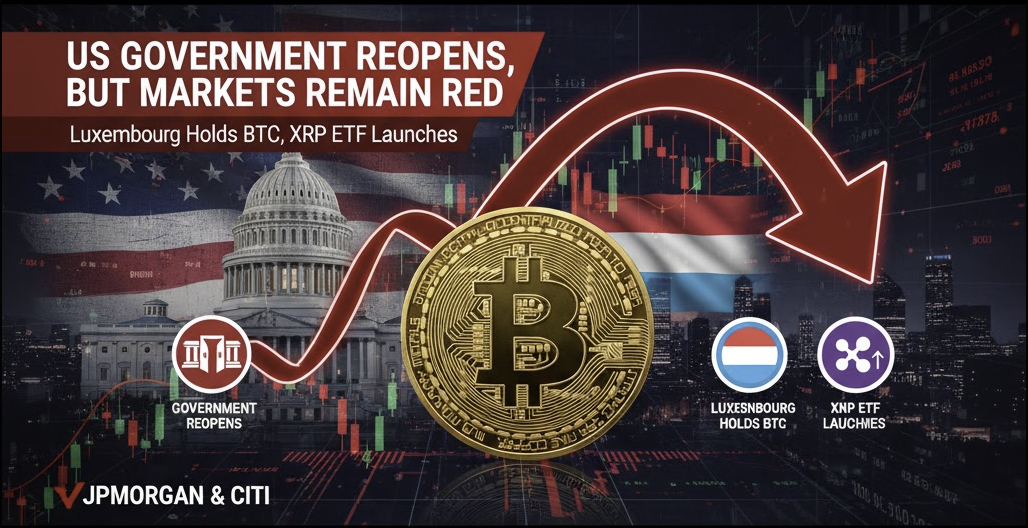Recent signals suggest the potential formation of asset bubbles, fueled by ongoing monetary easing policies across various nations. This article delves into the implications of these policies, focusing on the US and global markets, and offers strategic insights for investors, particularly concerning crypto assets.
Market Dynamics: US Stocks Soar, Bitcoin Holds High Amidst Policy Shifts
Thursday's trading session (June 26th, US) concluded with strong gains across all three major US stock indices: the Nasdaq surged by approximately 1%, the Dow Jones saw a similar increase, and the S&P 500 climbed 0.8%, with the latter hitting a new all-time high during the session. Post-market futures indicated continued upward momentum, particularly for the Nasdaq and S&P 500. Oil prices saw a slight decrease but remained around $65 per barrel, while gold also corrected downwards to $3286 per ounce.
Recent key US economic data presents a picture of slowing growth. Specifically, the US Q1 GDP was revised downwards to -0.5%, lower than the forecasted -0.2% and the figure announced on May 19th. This downward revision suggests the US economy is weaker than initially estimated, raising concerns about decelerating growth amid persistently high interest rates and signs of weakening consumer spending. Conversely, initial jobless claims reached 236,000, lower than the previous period's 246,000, indicating that the labor market remains relatively stable in the short term.
Bitcoin experienced a slight correction but maintained its position around $107,000. Most major altcoins saw minor gains. However, the overall crypto market capitalization slightly decreased to $3.39 trillion. The percentage of BTC in profit when Bitcoin is around this price point is 96.3%. This high percentage underscores the resilience and long-term holding conviction among Bitcoin investors.
On Thursday, US Bitcoin spot ETFs continued to see positive inflows, though at a reduced rate compared to the previous session. Total inflows into these funds amounted to $226.7 million, predominantly from BlackRock's IBIT fund. ETH spot ETFs, however, experienced outflows of $26.4 million. This sustained inflow into Bitcoin ETFs, despite market fluctuations, highlights ongoing institutional demand for BTC exposure.

The market has recently weathered a barrage of negative news—from economic downturns and political instability to geopolitical conflicts. Yet, US equities have still reached new highs. This phenomenon suggests that underlying policy shifts, particularly expansive fiscal and potentially easier monetary conditions, are overriding immediate negative headlines. Financial markets remain constantly influenced by numerous "big stories," from trade wars and Middle East conflicts to concerns over rising oil prices. Investors, especially retirees who no longer have new income streams, are particularly susceptible to negative news and may make fear-driven decisions to sell assets, leading to long-term financial consequences.
In such times, it's crucial to evaluate whether new information impacts one's core investment thesis. If not, sticking to one's investment strategy and principles is paramount. There will always be moments when the market is dominated by fear. The key is to maintain investment principles based on long-term conviction and a clear understanding of one's investment rationale. By broadening one's perspective, investors will realize that the market has weathered numerous similar crises throughout history and emerged stronger.
The Makings of an Asset Bubble: Policy Shifts & Market Dynamics
A pervasive sentiment, especially evident this past week, suggests that asset bubbles might be forming due to increasingly loose monetary policies globally. To put it simply, a trend is emerging where central banks are adopting policies of monetary easing, relaxing bank capital adequacy requirements, and allowing highly speculative and risky activities (such as private lending and highly leveraged trades by hedge funds) to operate with less stringent reporting. For example, recent plans to reduce US bank supervision are projected to unleash approximately $6 trillion into the market.

Wall Street brokerages estimated on Thursday that large U.S. global banks can expect as much as $6 trillion in additional balance sheet capacity and billions in freed-up capital under a Federal Reserve plan to relax leverage rules.
Furthermore, additional stimulus is expected next week from a budget package that is being fast-tracked for approval before President Trump's self-imposed July 4th deadline (which may be extended if not met).

Broadly, the bill remains the same: a combination of tax-cut extensions, new tax cuts, border and military spending along with spending cuts on Medicaid and nutrition assistance that represent the core of Trump’s agenda. The House bill would increase budget deficits by $2.4 trillion over a decade, and the Senate version could lead to bigger deficits once it is tallied up, according to the Committee for a Responsible Federal Budget.
These tax cuts are intended to boost consumer spending and free up capital for investment within the US economy. While some, like Elon Musk, may vehemently oppose this bill for its "utterly insane and destructive" nature, President Trump has pushed hard for its approval.
Learning from Past Cycles: A Phased Approach to Bubble Formation
For those who experienced the monetary injections of 2001-2006 and 2012-2019, a clear pattern emerges:
- Gradual Inflation, Then Surges: The bubble inflation process doesn't explode immediately. Instead, it oscillates through smaller waves before culminating in one or two massive "blow-off" tops, typically accompanied by extreme FOMO (Fear Of Missing Out).
- Fundamentals Lag Price: Asset prices will increasingly decouple from underlying fundamentals. This divergence is a classic hallmark of a speculative bubble.
- Buy the Dips: Opportunities to "buy the dip" will consistently arise. During these expansionary phases, markets often experience sharp corrections before resuming their upward trajectories. This applies across various asset classes, including stocks, real estate, and crypto. The rationale is that credit liquidity doesn't flood the market all at once; it flows sequentially through various channels during the initial bubble-building stage.
At this juncture, we are not at the peak of a bubble. In my analysis, we are entering an acceleration phase of the bubble inflation process, as price-to-fundamentals ratios have not yet reached the "crazy FOMO" peaks observed in previous cycles. For example, while US stock valuations are returning to peak levels, there's still a 10-15% cushion compared to the "Covid crazy" period. Adjusting for funding liquidity factors, there's even more room before reaching dot-com bubble levels.

Concurrently, the earnings outlook for US stocks, though slowing, has rebounded. This helps to keep valuations from becoming excessively irrational for some time. Geopolitical risks, trade wars, and the rising US debt will act as catalysts, simultaneously increasing volatility and curbing the most extreme FOMO impulses this year. However, once trade deals are finalized, the Fed cuts interest rates, and the budget is approved, only a significant economic slowdown (resulting from truly terrible trade deals) could prevent this bubble from expanding further.

In a context where most countries are, to varying degrees, shifting towards a pro-growth stance by boosting domestic spending (due to trade war difficulties and the loss of global trade growth catalysts), the inevitable consequence is asset price appreciation. Importantly, this isn't an overnight or next-month surge; it may take time, with potential corrections before sustained growth. In such a market, buying the dips and holding for several years presents a very high probability of success.

Naturally, there will be explosive trading sessions and market participants calling "All-In," as seen last Friday (though later deflated by President Trump's spat with Canada). Many more such calls are expected, as numerous funds have already increased their leverage and will continue to push. The "risk-on" sentiment is genuine. These players are not looking at one week or one month; they are looking at least one to two quarters. Those using less leverage are looking even further ahead.
Which Asset Classes Stand to Benefit?
Policies from the UK, US, and Europe clearly indicate the following beneficiaries:
- Defense Stocks: These stocks have already seen significant gains, and more capital is expected to flow into this sector.
- Financial Stocks: Reduced capital adequacy regulations and relaxed oversight conditions will create additional reserve capacity. This will either boost share buybacks or increase profit margins, both of which will drive up the stock prices of major banks and trading firms (encouraging more trading activity).
- Mergers & Acquisitions (M&A): Abundant liquidity will fuel M&A activity. Who has ample capital and the greatest urgency for M&A right now? Tech companies, especially those in AI. This could potentially form the largest asset bubble.
- Crypto: Cryptocurrencies will benefit as some fiat currencies depreciate. Upcoming board meetings of publicly listed companies are likely to discuss the possibility of holding a portion of their corporate treasury in crypto assets.
Given the current situation, for the next 2-3 months, I maintain the view that "the market remains stable." I don't anticipate extreme surges to 7,000 points for stocks or parabolic moves for crypto just yet. The market is fundamentally in a state of "not much money now, but much money soon." Investors don't have enough ammunition to fire all at once, but they are being signaled that many ammunition crates are en route.
What About Gold? A Different Kind of Play
Fundamentally, gold is not a "risk-on" play. It traditionally serves as a safe haven during intense geopolitical turmoil. With a "risk-on" strategy currently prioritized, gold may lose some of its positive inflows. However, investors, especially large funds, will likely maintain a certain percentage of gold in their portfolios. Moreover, central banks are expected to increase gold purchases (as the US dollar might decline), seeking to reduce their dependence on the US.

If you believe that the Iran-Israel conflict is highly likely to escalate further, and new hotspots will intensify, including between China and Taiwan, then buying gold during corrections makes sense. However, this is not an "asset bubble" play; it's a bet on increased global instability.

It's crucial to understand the nature of your investment. Don't bet on a dark horse thinking you're betting on the frontrunner. Not all sectors will thrive. Some industries will be negatively impacted because when countries are forced to boost defense spending or implement tax cuts, they must cut funds elsewhere. Furthermore, some emerging markets could face a double blow from debt and currency crises. Even Russia faces risks, let alone countries already struggling before the trade wars.
Disclaimer
This article is for informational purposes only and should not be considered financial advice. Please do your own research before making investment decisions.


.png)





